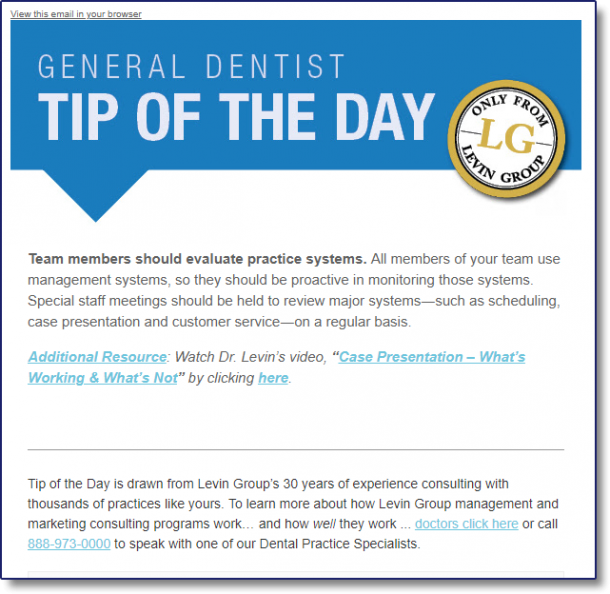You’re the expert on oral health, yet you have trouble persuading patients to accept beneficial treatment. They feign interest in your recommendations, but most of the time they don’t follow through, especially for larger cases and cosmetic treatment. It’s frustrating.
That lack of success can quickly turn into a self-fulfilling prophecy. You don’t want to come into the presentation with a negative mindset that patients will automatically turn down your treatment. Break the cycle of rejection with these four simple but effective “powers of persuasion” to win over patients:
- Be Enthusiastic
Enthusiasm engages patients. Many dentists are simply too professorial in their presentations. You’re not pontificating on a research paper at a symposium––you’re beautifying smiles, saving teeth and improving lives. All good things, right? Your attitude, demeanor and manner should reflect that critical mission. - Stay Focused
During the case presentation, there’s nothing more important than the patient in the chair.Don’t get distracted. Tell your team you’re not to be interrupted, except for a major emergency. Make eye contact, use the patient’s name, and periodically ask if there are any questions. Act as if the only thing you have to do that day is talk to that patient about treatment. Rushing, interruptions, and bad body language will guarantee that the answer is NO. - Be Compelling
We’ve all seen TV shows and movies where lawyers make a powerful case in court. The operatory is your courtroom and the patient is the judge and jury. If you think through every element of the case––the type of treatment, benefits, points to emphasize, financial issues, potential patient concerns, etc.––you can anticipate patient objections. Never react defensively when a patient asks a tough question. Treat it simply as a normal part of the discussion. Throughout the presentation, make sure patients know you have their best interests in mind. - Ask For The Close
In any type of sales situation, and case presentation is a professional level of sales, you have to ask for the close. If you simply present a case without asking for the close, you’ve made it easy for patients to say “no.” In fact, they don’t have to say anything. By asking for the close, patients are compelled to respond. If you’ve done an excellent job at making the case treatment, more patients will say “yes.”An excellent script to ask for the close is “Mrs. Jones, would you like to have this treatment performed?” Give the patient time to think and respond and then be ready to answer questions or objections.
Conclusion
Everything matters during case presentation. Even the seemingly small stuff. Make these “little” adjustments to your case presentations and you’ll reap big rewards.
Additional Resource
Read a free excerpt from 43 Rules to Increase Practice Production by clicking here
[thb_button link=”https://levingroup.com/practicesuccess/” class=”pull-right” style=”” rounded=”” color=”black” icon=”” size=”medium” animation=”right” ]Back to Practice Success Archive »[/thb_button]
